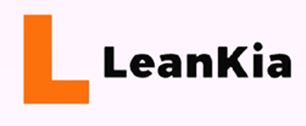
📖 Introduction In the world of manufacturing and operations, 5S (Sort, Set in Order, Shine, Standardize, Sustain) is often seen as a simple housekeeping tool. But when applied properly, it becomes a powerful strategy that delivers measurable improvements in efficiency,... Read more

Living in a small flat often means battling clutter and constantly searching for more space. The good news is, you don’t need to invest in bulky furniture or expensive organizers. With a simple pack of S-hooks, you can instantly... Read more

Introduction In today’s competitive manufacturing landscape, cost-saving initiatives are critical for survival and growth. Among lean methodologies, 5S (Sort, Set in Order, Shine, Standardize, Sustain) stands out as a simple yet powerful tool that not only improves workplace organization but... Read more

In the fast-paced world of manufacturing and industrial operations, every second counts. Downtime, inefficiencies, and delays can add up to significant costs over time. One often overlooked—but highly impactful—source of operational loss is Lost Tool Time. If your team frequently... Read more
In an era where adaptability and efficiency define long-term success, Kaizen has emerged as a timeless approach to continuous improvement. Rooted in Japanese philosophy, Kaizen translates to “change for better” and emphasizes small, consistent steps toward excellence. While many organizations... Read more

In today’s rapidly evolving business landscape, staying ahead requires more than just innovation—it demands a culture of continuous improvement. One of the most powerful philosophies to achieve this is Kaizen, the Japanese concept of “change for better.” Traditionally rooted in... Read more

In Lean manufacturing and operations, every second counts. Whether you’re working on a factory floor, in a maintenance bay, or within a high-tech production environment, tool management is often the silent lever that can significantly enhance—or inhibit—efficiency. The misplacement of... Read more

In the high-stakes world of manufacturing, every second counts—and so does every tool. Tool loss in manufacturing units not only leads to unexpected downtime but also inflates operational costs, affects product quality, and poses safety hazards. Whether you’re managing a... Read more
In industries like manufacturing, construction, aviation, and healthcare, tools are essential assets that directly impact productivity and safety. Yet, tool misplacement, theft, or inefficient manual tracking systems can lead to operational downtime, increased costs, and safety hazards. Enter RFID (Radio... Read more

In today’s fast-paced industrial environments, efficiency and productivity are everything. One common but often overlooked source of lost time is the simple act of searching for tools. When tools are misplaced, unorganized, or scattered across workstations, it can lead to... Read more






